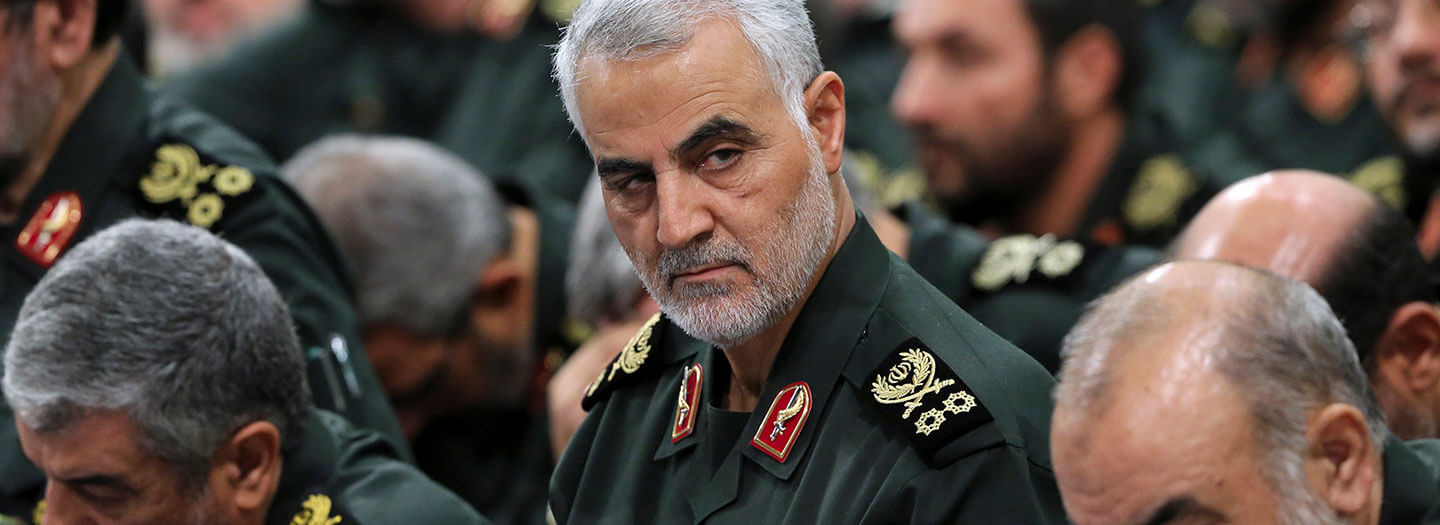
Revolutionary Guard Gen. Qassem Soleimani attends a meeting in Tehran, Iran on Sept. 18, 2016.
The commander of Iran’s Revolutionary Guard Corps was killed early Friday in a drone strike at Baghdad International Airport authorized by President Trump. An American MQ-9 Reaper drone fired missiles into a convoy leaving the airport, killing Maj. Gen. Qassem Soleimani and several officials from Iraqi militias backed by Tehran.
US Secretary of Defense Mark Esper explained the action: “General Soleimani was actively developing plans to attack American diplomats and service members in Iraq and throughout the region. General Soleimani and his Quds force were responsible for the deaths of hundreds of American and coalition service members and the wounding of thousands more.
“He had orchestrated attacks on coalition bases in Iraq over the last several months—including the attack on December 27th—culminating in the death and wounding of additional American and Iraqi personnel. General Soleimani also approved the attacks on the U.S. embassy in Baghdad that took place this week.”
Who was Qassem Soleimani?
Qassem Soleimani was an Iranian Major General in the Islamic Revolutionary Guard Corps. Since 1998, he commanded the Quds force responsible for extraterritorial military and clandestine operations.
Secretary of State Mike Pompeo deemed Soleimani equally as dangerous as Islamic State leader Abu Bakr al-Baghdadi. In April 2019, the State Department announced that Iran was responsible for killing 608 American troops during the Iraq War. They determined that 17 percent of all US personnel deaths in Iraq from 2003 to 2011 were orchestrated by Soleimani.
A BBC analyst notes that Soleimani was seen as “the mastermind behind Iran’s vast ambition in the Middle East, and the country’s real foreign minister when it came to matters of war and peace.” Soleimani was “widely considered a principal architect of President Bashar al-Assad’s war in Syria, the ongoing conflict in Iraq, the fight against Islamic State, and many battles beyond.”
According to CNN, the significance of Soleimani’s death “cannot be overstated.” An analyst for MSNBC calls him “the world’s number one bad guy.” He states that the killing of Soleimani “means much more in terms of saving current lives” than even the deaths of Osama bin Laden and ISIS founder Abu Bakr al-Baghdadi.
What led to the attack?
In June 2019, the Iranians shot down an American surveillance drone. Three months later, a barrage of missiles and drones targeted two of the world’s most important oil facilities in Saudi Arabia.
Last Friday, the US blamed an Iranian-backed militia for an attack that killed a US contractor and wounded four US service members. On Sunday, the US carried out airstrikes that were said to have killed at least twenty-five militia members. Demonstrators, including members of that Iranian-backed militia, then stormed the US Embassy compound in Baghdad. Gen. Soleimani reportedly orchestrated these militia activities.
Last Tuesday, the US Army’s 82nd Airborne Division was told to plan for possible deployment to Kuwait, placing as many as four thousand troops on standby. Soldiers from this division arrived in Kuwait hours before the airstrike that killed Gen. Soleimani.
What comes next?
The New York Times calls Soleimani’s death “a staggering blow for Iran at a time of sweeping geopolitical conflict” and “a serious escalation of Mr. Trump’s growing confrontation with Tehran.” The Washington Examiner describes Soleimani’s death as “a monumental event and great news for the United States and the countless victims of his strategy that has unleashed death and chaos throughout the Middle East.”
Iran’s Supreme Leader Ayatollah Ali Khamenei warned that “harsh retaliation is waiting” for the US after the airstrike. The US has urged its citizens to leave Iraq “immediately.” CNN speculates that American forces in Syria and its allies in Bahrain, the United Arab Emirates, Qatar, and Saudi Arabia could “fall victim to Iranian retaliatory measures.” The Associated Press adds that Iran’s allies in Iraq, Lebanon, Yemen, Syria, and Gaza could be mobilized.
The Washington Examiner states that “a global terrorist campaign of uncertain duration is likely. In the context of Iranian domestic political instability and deep economic pressures on the regime, Iran might also use this killing as an excuse to destabilize oil flows through the Strait of Hormuz. Each of those developments would require immediate American deterrent response.”
The path to true peace
The future is known to no one but God (cf. Isaiah 46:10). Our responsibility as God’s people is to pray for our leaders (1 Timothy 2:1–2) and to work for both justice (Amos 5:24) and peace (Matthew 5:9) while seeking to lead all people to the Prince of Peace (Isaiah 9:6).
As C. S. Lewis notes, “God cannot give us happiness and peace apart from himself, because it is not there. There is no such thing.”
We cannot give the world what we do not have. In these tremulous times, our peace can be a powerful witness to a skeptical culture. Here’s the path to such peace: “Do not be anxious about anything, but in everything by prayer and supplication with thanksgiving let your requests be made known to God. And the peace of God, which surpasses all understanding, will guard your hearts and your minds in Christ Jesus” (Philippians 4:6–7).
No matter what is happening in the world, in every circumstance and challenge we can have the “peace of God” today.
Do you?
NOTE: Are you a pastor or church leader? Our new ministry of support and encouragement for you will offer free resources and a monthly teleconference with Pastor Mark Turman and me. A Pastor’s View launches on Tuesday, Jan. 7. To join our email list, I invite you to subscribe to A Pastor’s View here.












